Related Research Articles
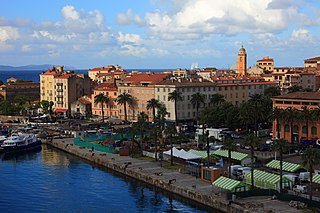
Ajaccio is a French commune, prefecture of the department of Corse-du-Sud, and head office of the Collectivité territoriale de Corse. It is also the largest settlement on the island. Ajaccio is located on the west coast of the island of Corsica, 210 nautical miles (390 km) southeast of Marseille.

Aulnay-sous-Bois is a commune in the Seine-Saint-Denis department in the Île-de-France region in the north-eastern suburbs of Paris, France. It is located 13.9 km (8.6 mi) from the Kilometre zero.
Filippi is an Italian surname. Notable people with the surname include:

Cargèse is a village and commune in the Corse-du-Sud department of France on the west coast of the island of Corsica, 27 km north of Ajaccio. As of 2017, the commune had a population of 1,325.

François Duprat was an essayist and politician, a founding member of the Front National party and part of the leadership until his assassination in 1978. Duprat was one of the main architects in the introduction of Holocaust denial in France.
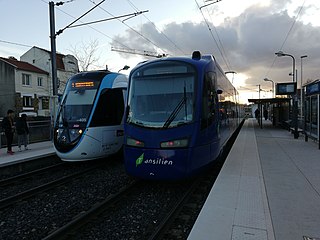
Île-de-France tramway Line 4, also called the T4, is an 13.3-kilometre (8.3 mi) long tram-train line operated by the SNCF in the Seine-Saint-Denis department of Île-de-France.. The line starts at Aulnay-sous-Bois and features two branches, with the first running to Bondy and the second running to Montfermeil.

François Asensi is a French politician who has served as the Mayor of Tremblay-en-France since 1991 and served as Member of the National Assembly for Seine-Saint-Denis' 11th constituency from 1988 to 2017.
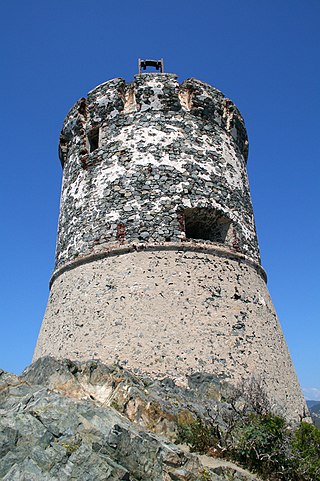
The Torra di a Parata is a ruined Genoese tower located in the commune of Ajaccio, Corse-du-Sud, on the west coast of the island of Corsica, France. The tower sits at an elevation of 55 metres (180 ft) on a rocky promontory, the Pointe de la Parata, to the north-east of the Îles Sanguinaires archipelago.
The Tower of Asprettu was a Genoese tower near to Ajaccio on the west coast of the Corsica. No trace of the tower survives.

The Tower of Caldarellu or the Tower of Figari is a Genoese tower located in the commune of Pianottoli-Caldarello (Corse-du-Sud) on the southwest coast of the Corsica. The tower sits at an elevation of 16 metres (52 ft) on the north shore of the Baie de Figari.
The Tower of Cantonu Grossu was a Genoese tower located in the commune of Ajaccio on the west coast of the Corsica. The tower was on the north coast of the Golfe d'Ajaccio between the city and the Pointe de la Parata. No trace of the tower survives.

The Tour de Capitello is a Genoese tower located in the commune of Grosseto-Prugna (Corse-du-Sud) on the coast of the French island of Corsica. The tower lies to the south of Ajaccio near the Porticcio beach.
The Tower of Castelluchju is a ruined Genoese tower located in the commune of Ajaccio (Corse-du-Sud) off the west coast of the Corsica. The tower sits on the southern end of the Grande Sanguinaire, the largest island in the Îles Sanguinaires archipelago.
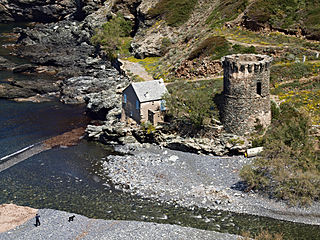
The Tower of Negru is a Genoese tower located in the commune of Olmeta-di-Capocorso (Haute-Corse) on the coast of the Corsica. The tower sits on the shore on the west coast of Capicorsu.

The Tower of Punta d'Arcu is a ruined Genoese tower located in the commune of Borgo, Haute-Corse on the east coast of Corsica. Only part of the base survives.

The Tower of Santa Maria Chjapella is a ruined Genoese tower located in the commune of Rogliano on the east coast of the Corsica. Only part of the tower survives.
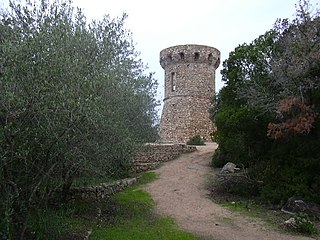
The Tower of Isuledda is a Genoese tower located in the commune of Pietrosella (Corse-du-Sud) on the Corsica. The tower sits at an elevation of 68 m on a promontory, the Punta di Sette Nave, which forms the southern limit of the Gulf of Ajaccio.

The Genoese towers in Corsica are a series of coastal defences constructed by the Republic of Genoa between 1530 and 1620 to stem the attacks by Barbary pirates.
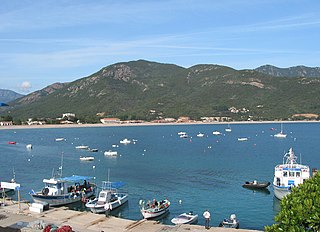
Sagone is a small seaside resort on the west coast of the island of Corsica in the commune of Vico. The settlement dates back to the 4th century, when a Roman villa was built there, with other buildings for slaves or peasants. A Christian church was built in the 5th or 6th century, later abandoned. A new cathedral was built in the 12th century, seat of the Roman Catholic Diocese of Sagone. The Genoese built a tower in the 16th century to defend Sagone against Barbary pirates. The cathedral had been abandoned by the 18th century, and the town was deserted. The tower was badly damaged in 1811 during an attack by the British. Today the village is growing again due to tourism.

The Gang du Petit Bar is a Corsican organized crime group.
References
- 1 2 3 "Ange-Marie Filippi-Codaccioni 1925 - 2018 : L'hommage des communistes corses à leur camarade". Corse Net Infos. July 15, 2018. Retrieved July 28, 2018.
- 1 2 3 4 "FILIPPI-CODACCIONI Ange-Marie". Le Maitron: Dictionnaire Biographique: Mouvement Ouvrier Mouvement Social. Pantheon-Sorbonne University. Retrieved July 28, 2018.
- 1 2 3 4 "ANGE-MARIE FILIPPI-CODACCIONI EST DÉCÉDÉ". L'Humanité . July 13, 2018. Retrieved July 28, 2018.